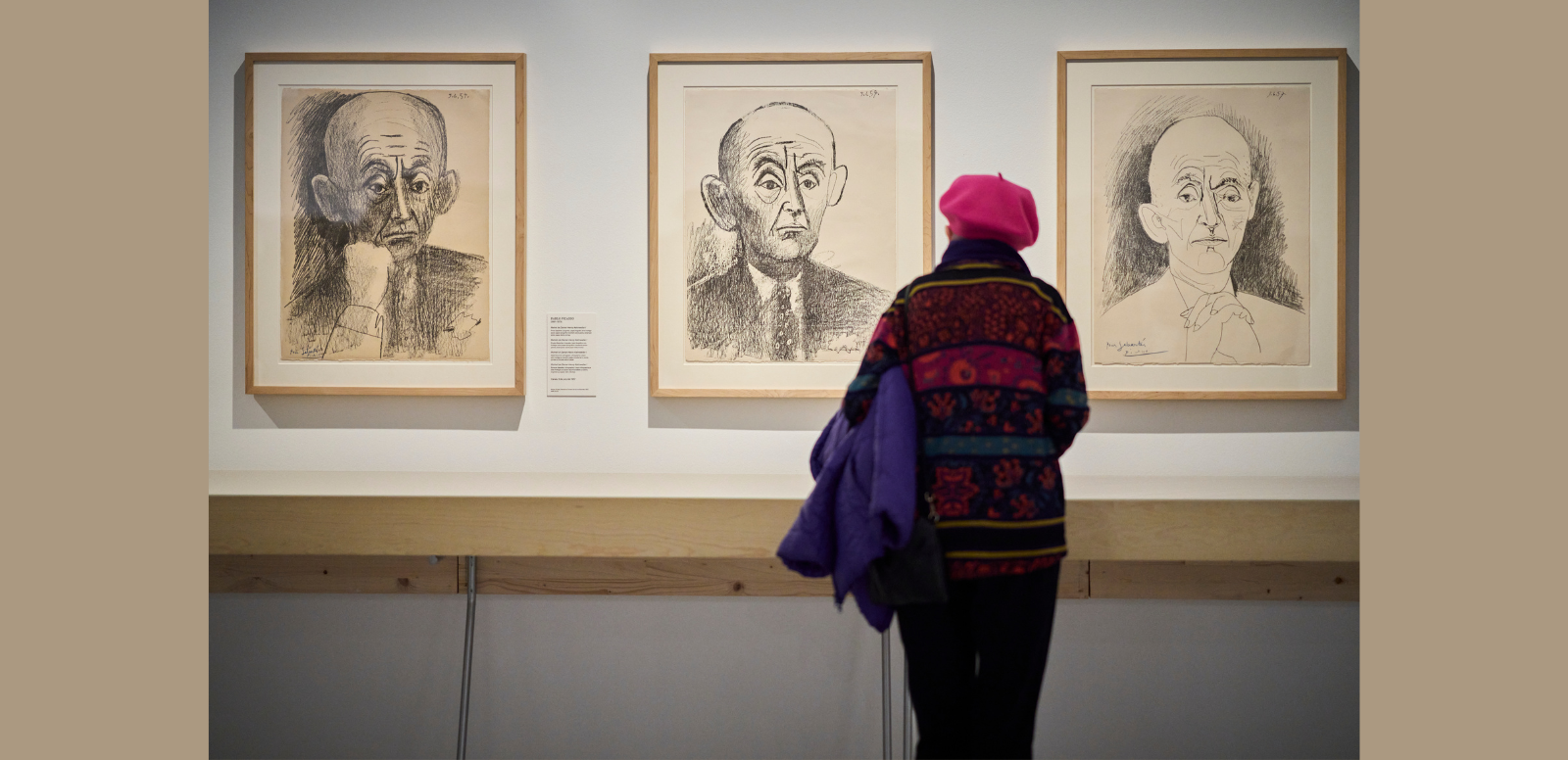
Pablo Picasso's work can be found in museums all over the world. Among these, those that were either founded by him or received his direct donations or those of his heirs or even those of his most intimate circle are worthy of attention: the museums dedicated to Picasso.
Picasso Museum Barcelona
The Museu Picasso Barcelona, inaugurated in 1963 at the express request of Pablo Picasso, is the most obvious testimony to the esteem in which the artist held the Catalan capital. Barcelona was a very influential city in Picasso's artistic career and was a turning point in his life. In 1919, he made his first donation to the city, giving them the Arlequín; and in 1960, Jaume Sabartés, Picasso's friend and personal secretary, proposed to Barcelona City Council, at Picasso's own request, the creation of a museum dedicated to his work. On 27 July, by agreement of the City Council, the Museu Picasso de Barcelona, dedicated to the artist's works, was built.
The collection includes more than 4,200 pieces, many of them donated by the artist and his family over the years. It is the most complete collection of Picasso's formative and early years, making the museum a reference centre for the study of his work, and is practically exhaustive up to the blue period. The museum also houses an important representation of works from 1917 and the Las Meninas series (1957), as well as a complete collection of prints.
This year the museum celebrates the 60th anniversary of its inauguration.
Musée national Picasso Paris
The Musee national Picasso-Paris is located in the so-called Hôtel Salé, an exceptional 17th century building in the historic heart of French culture, bought in 1962 by the City Council and classified as a Historic Monument in 1968. The museum opened in October 1985.
Representative of his entire career, the museum's collection is made up of more than 200,000 pieces from the artist's workshops, which he kept until his death, and from all his archives, forming a faithful and intimate portrait of one of the most emblematic modern artists. This extensive collection is the result of a donation by the heirs of Pablo Picasso and by Jacqueline Picasso.
This extraordinary collection of works gives the Musée Picasso Paris a central role on an international level, both for the presentation of Picasso's work and for research related to his life and work and to modern art in general.
Picasso Casa Natal Museum
The Picasso Birthplace Museum was created by Malaga City Council in 1988 under the name of the Pablo Ruiz Picasso Foundation in the house where the artist was born. It was founded as an Autonomous Municipal Body with the aim of studying and promoting his work and his figure. On 25 March 1983, the building was declared a Historic-Artistic Monument of National Interest.
Since then, it has organised more than 200 temporary art exhibitions, both in its rooms and in other museums and national and international institutions, and has assembled an extensive collection of engravings, ceramics and illustrated books by Picasso. In overall figures, the Museum has 800 art pieces by Picasso, as well as a Library and Documentation Centre specialising in the artist.
Picasso Museum Málaga
The initial idea was born in 1953 from contacts between Pablo Picasso himself and Juan Temboury Álvarez, a Málaga-born art history scholar, cultural manager and archaeologist, because the painter wanted his work to be present in his native city. However, this project was frustrated shortly afterwards. Christine Ruiz-Picasso, widow of Paul Ruiz-Picasso, the artist's eldest son, resumed contacts with the Malaga city government on the occasion of the exhibitions in the Episcopal Palace, Picasso clásico (1992) and Picasso (1994).
Such was the enthusiasm of the citizens of Málaga to be able to see Picasso's work for the first time in Andalusia that in 1996 Christine Ruiz-Picasso took up the project again and, together with Bernard Ruiz-Picasso, the artist's grandson, donated 233 works to the Fundación Museo Picasso Málaga. Legacy Paul, Christine and Bernard Ruiz-Picasso. The Museum became a reality, inaugurated by King Juan Carlos I and Queen Sofia on 27 October 2003.
This year the museum celebrates the 20th anniversary of its inauguration.
Kunstmuseum Pablo Picasso Münster
Opened in 2000, it was renamed the Pablo Picasso Museum in 2010. It is the first and only monographic museum dedicated to Picasso in Germany. Behind the listed facades in the heart of Münster's old town, the museum houses a unique collection of 800 lithographs by Picasso. The temporary exhibitions focus on his life and work, but also offer a special place for his contemporaries.
Other museums founded to pay homage to the Malaga-born artist:
Museo Picasso - Eugenio Arias Collection:
The Museo Picasso-Colección Eugenio Arias in Buitrago de Lozoya preserves a peculiar collection forged through a 26-year long friendship between two exiled Spaniards, the artist Pablo Ruiz Picasso and his barber, Eugenio Arias.
The collection, ceded by Eugenio Arias to the Diputación de Madrid in 1982, was transferred from France to Spain after the long exile of Picasso's barber, as the artist used to call him, in response to his wish to create a monographic museum in his home town. The collection is made up of works given and dedicated by Picasso to Eugenio Arias, a collection of a very varied nature, including drawings, graphic works, ceramics, posters and dedicated books.
Installed in the premises of the Town Hall of Buitrago de Lozoya, it was the first museum created and inaugurated in the Community of Madrid on 5 March 1985.
Picasso House Museum in A Coruña
This is the house in A Coruña belonging to the Ruiz Picasso family, who moved in on the first floor in 1891 from Malaga. They lived here until April 1895, when they left for Barcelona.
It is a typical architecture, which maintains the original structure with its wooden galleries and where a 19th century house has been recreated to recreate the environment of the artist's early childhood.
Centre Picasso d'Horta in Tarragona.
The Centre Picasso in Horta is a tribute to Picasso that recalls the artist's two trips to Horta de San Juan: during a convalescence during the summer of 1898 until February 1899, at the invitation of his friend Manuel Pallarés. The second stay was from May to August 1909 in the company of Fernande Olivier. The Centre was inaugurated in 1992 in the Antiguo Hospital, a Renaissance building, built in 1575 by the City Council outside the city walls.

